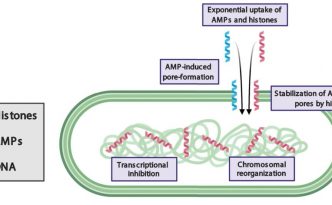Lab technician position, focus on host-microbe interactions
A full or part-time lab technician position is available for a project that is a joint collaboration between the Siryaporn and Gross …
A full or part-time lab technician position is available for a project that is a joint collaboration between the Siryaporn and Gross …
Leora Duong awarded NSF GRFP fellowship for her work relating to Microbial Biology and Biophysics. Congratulations!!!
Just published @ Frontier Med. Tech.: Leora’s Mini-Review on the latest strategies to develop the next generation of antibiotics. https://t.co/hOLdx8vVEs?amp=1
Leora is giving a talk at today’s UCI Immunology Fair around 10:40am “A novel antimicrobial approach: histones and antimicrobial peptides”. Agenda here: http://www.immunology.uci.edu/immunology-fair/agenda.asp

First proposed as antimicrobial agents, histones were later recognized for their role in condensing chromosomes. Histone antimicrobial activity has been reported in innate immune responses. However, how histones kill bacteria has remained elusive. The co-localization of histones with antimicrobial peptides (AMPs) in immune cells suggests that histones may be part of a larger antimicrobial mechanism in vivo. Here we report that histone H2A enters E. coli and S. aureus through membrane pores formed by the AMPs LL-37 and magainin-2. H2A enhances AMP-induced pores, depolarizes the bacterial membrane potential, and impairs membrane recovery. Inside the cytoplasm, H2A reorganizes bacterial chromosomal DNA and inhibits global transcription. Whereas bacteria recover from the pore-forming effects of LL-37, the concomitant effects of H2A and LL-37 are irrecoverable. Their combination constitutes a positive feedback loop that exponentially amplifies their antimicrobial activities, causing antimicrobial synergy. More generally, treatment with H2A and the pore-forming antibiotic polymyxin B completely eradicates bacterial growth.
Louis and Phillip both received Division of Teaching Excellence and Innovation (DTEI) Summer Fellowships to develop modules for online pedagogy and distance …
Congratulations to the class of 2020. Calvin Trinh, Frank Ramirez, and Jennifer Poo are graduating. Calvin and Jennifer will be working towards …
Congratulations to Louis received the Edward Steinhaus Teaching Award! The award is presented to outstanding graduate students with promising futures as educators.
Congratulations to Jennifer for receiving Dean’s Award for Excellence in Research! Outstanding work!